The winners of the British Wildlife Photography Awards 2024 have been announced.
This year's top prize has been awarded to Ryan Stalker for his poignant image of a football half-encased in invasive goose barnacles, which was found washed up on a Dorset beach after an epic journey across the Atlantic Ocean.
More than 14,000 images were submitted into this year’s competition, with photographers competing in 10 different categories in the adult competition: Animal Behaviour, Animal Portraits, Botanical Britain, Black & White, British Seasons, Coast & Marine, Habitat, Hidden Britain, Urban Wildlife and Wild Woods.
Here, we reveal a selection of 10 category winners and runners-up, from a lounging walrus and a rope-walking fox to a leaping squirrel and a thieving hare.
- Environmental Photographer of the Year 2023 winner: Insect food experiment takes first prizes
- Nature Photographer of the Year 2023 winners: Heavenly image of spectacled bear in Andean Mountains takes top spot
- Ocean Art Underwater Photo Contest 2023 winners: diving macaque, adorable pygmy seahorse and nesting octopus take prizes
Ocean Drifter by Ryan Stalker
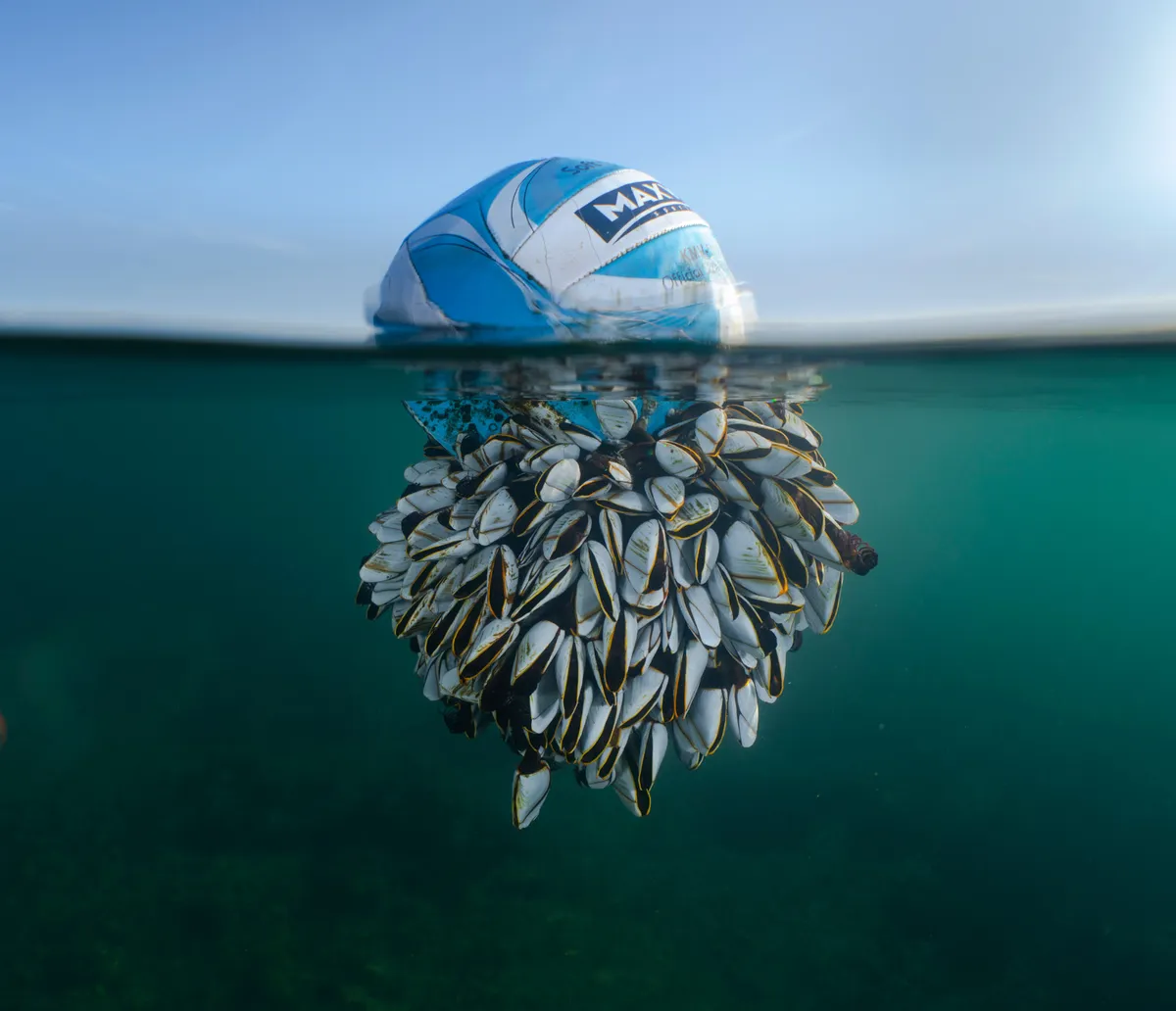
"Ocean Drifter is a photo of a football that is covered in goose barnacles below the waterline. Above the water is just a football. But below the waterline is a colony of creatures. The football was washed up in Dorset after making a huge ocean journey across the Atlantic and then returned to the sea for the photo to be taken. Goose barnacles are not native to the UK but can wash up on our shores during powerful Atlantic storms. Although the ball is waste and should not be in the sea, I do wonder about the journey the ball has been on. From initially being lost, then spending time in the tropics where the barnacles are native and perhaps years in the open ocean before arriving in Dorset. However, this waste can also bring creatures that may survive in UK waters and could become invasive species. More human waste in the sea could increase the risk of more creatures making it to our shores. " Ryan Stalker.
What and where: Goose barnacles (Thoracica), taken in Portland, Dorset, England.
The Tightrope Walker by Daniel Valverde Fernandez
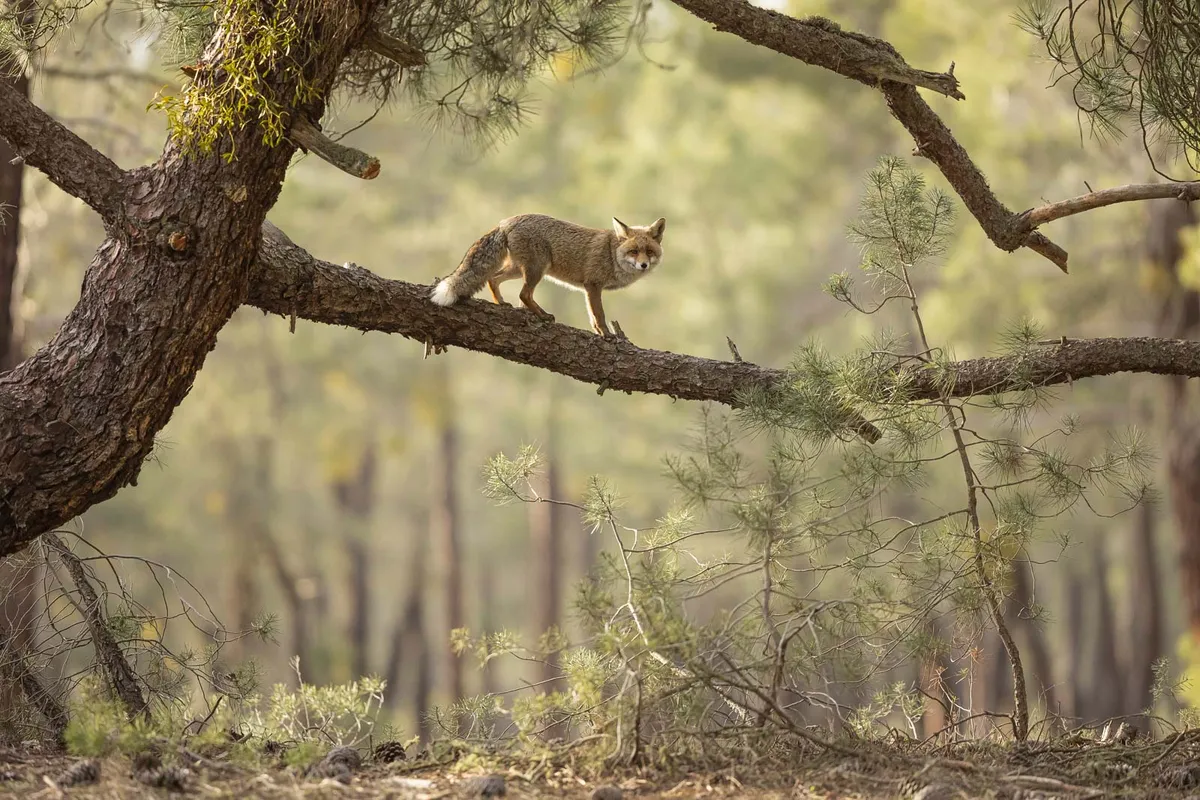
"In this image, you can see a red fox walking along a tree branch at a considerable height from the ground, demonstrating that these animals are true tightrope walkers of nature. The fox is perfectly framed between the branches and its silhouette is subtly highlighted by the sun’s rays falling on it." Daniel Valverde Fernandez
What and where: Red fox (Vulpes vulpes), taken at Sherwood Pines Forest Park, Nottinghamshire, England.
Three Frogs in Amplexus by Ian Mason
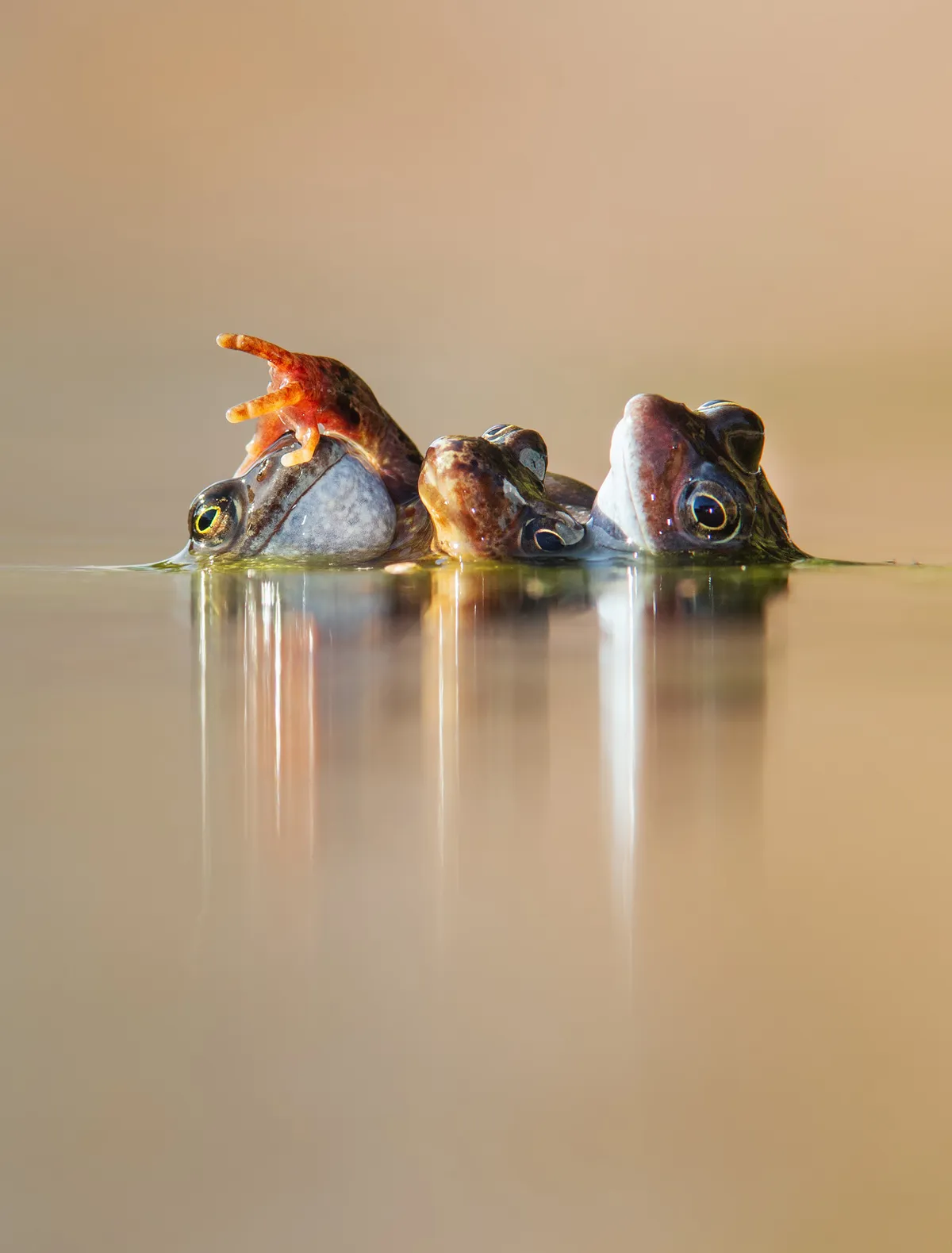
"Every March, our garden ponds suddenly come alive with hundreds of frogs that seem to appear overnight from nowhere. I have been photographing them for many years, and I am always fascinated and amused by their antics. Here, there has been a competition to mate with a female. For a lot of the time there is a frenzy of activity, but sometimes they freeze long enough to get a shot. The image is taken with the lens at water level, and the background is a distant larch tree." Ian Mason
What and where: Common frog (Rana temporaria), taken in Perthshire, Scotland.
The Crop Thief by Steven Allcock
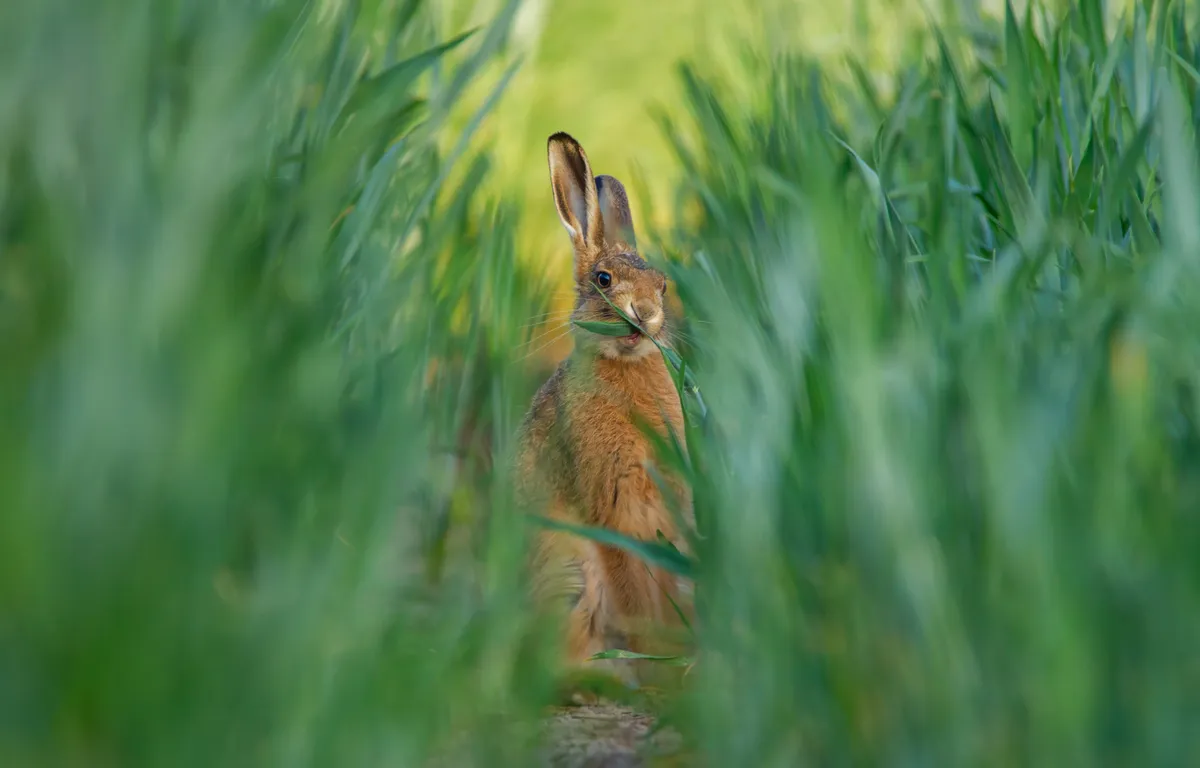
"It was a pleasant spring evening, and I was spending some time on recently obtained farmland permission where I had observed good numbers of brown hares. I stood at the edge of a crop field when I suddenly noticed this small hare leveret down the tramline, chewing on the crops. I approached slowly and quietly, getting close enough to capture the image. I got down low and fired a burst of shots. I particularly like this one because of the facial expression on the hare as it munches on the crop." Steven Allcock
What and where: Brown hare (Lepus europaeus), taken in Nantwich, Cheshire, England.
Beech for the Sky by Graham Niven
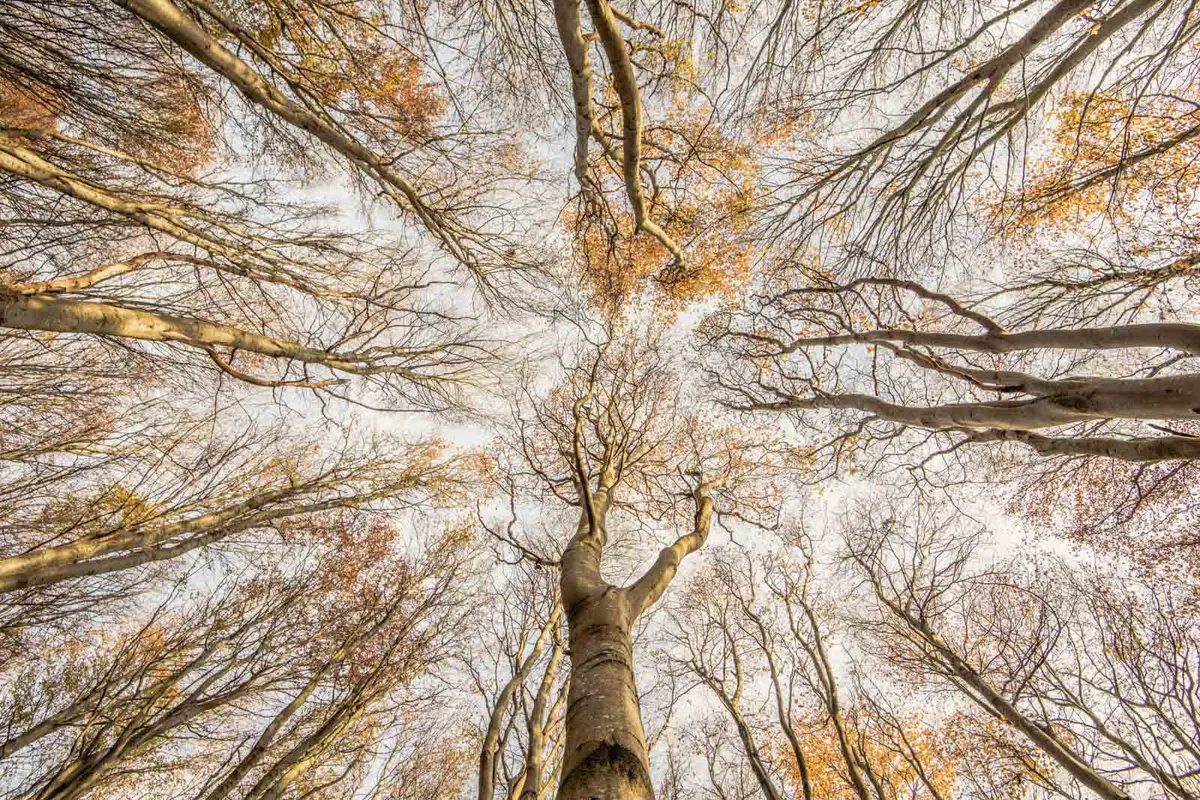
"Beech tree grove near Dunbar in East Lothian. When the leaves are almost gone, the branches show their ‘canopy shyness’ – a phenomenon observed in many species of trees in which the crowns of mature trees do not touch each other. In doing so, the trees form a canopy that has channel-like gaps which, when photographed from below, appear to create an intricate network of channels between the respective canopies. Besides the wondrous vision you are afforded, it’s also just a great excuse to lie down in the forest." Graham Niven
What and where: Beech (Fagus sylvatica), taken in East Lothian, Scotland.
Daisy Danger by Lucien Harris
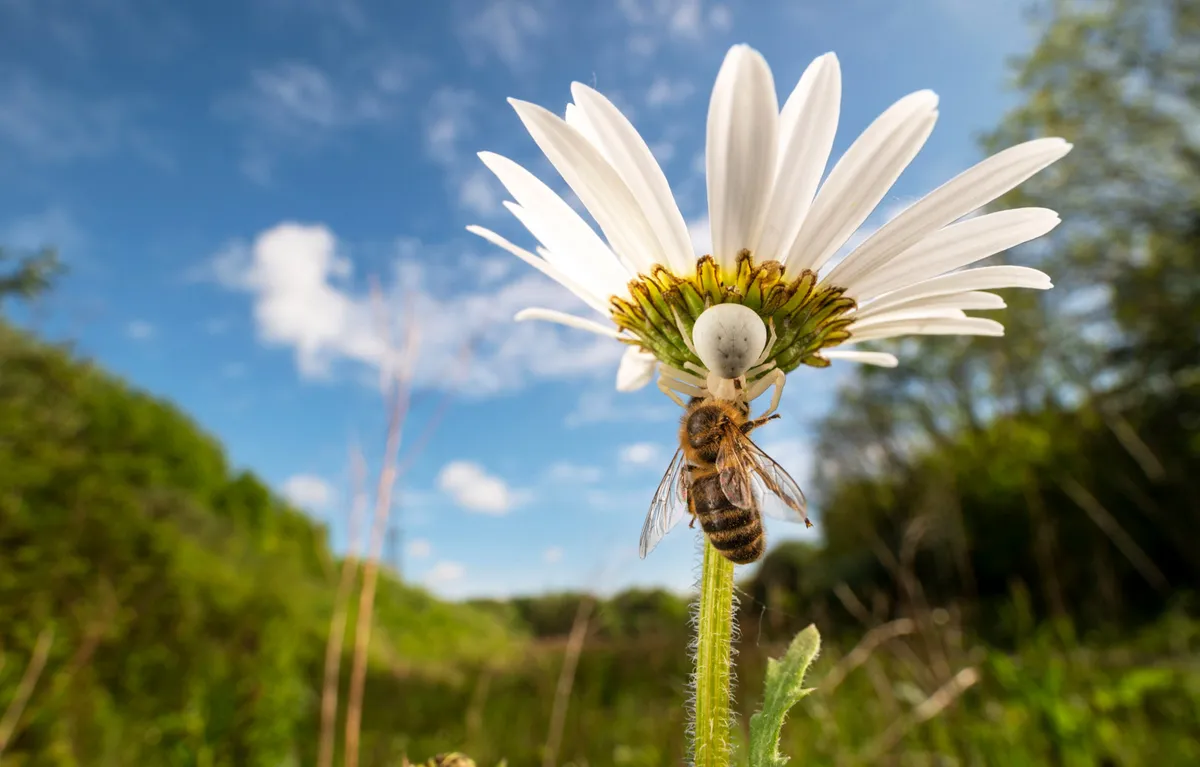
"This photo was taken in a patch of land along the A30 in Devon that has been left untouched for a long time, making it a haven for wildflowers and the wildlife that inhabits it. Using the Laowa wide-angle macro lens, I aimed to capture this scene. While walking, I came across a flower crab spider wrestling with a bee on an ox-eye daisy. The light was behind the subject, which backlit the flower nicely. However, the spider itself was quite dark, so I used some flashes and homemade flash diffusers to illuminate it. This allowed me to capture the deadly strength of these ambush predators." Lucien Harris
What and where: Flower crab spider (Misumena vatia) and Honey bee (Apis mellifera), taken at Lee Mill, Devon, England.
Fire in the Night by Dan Bolt
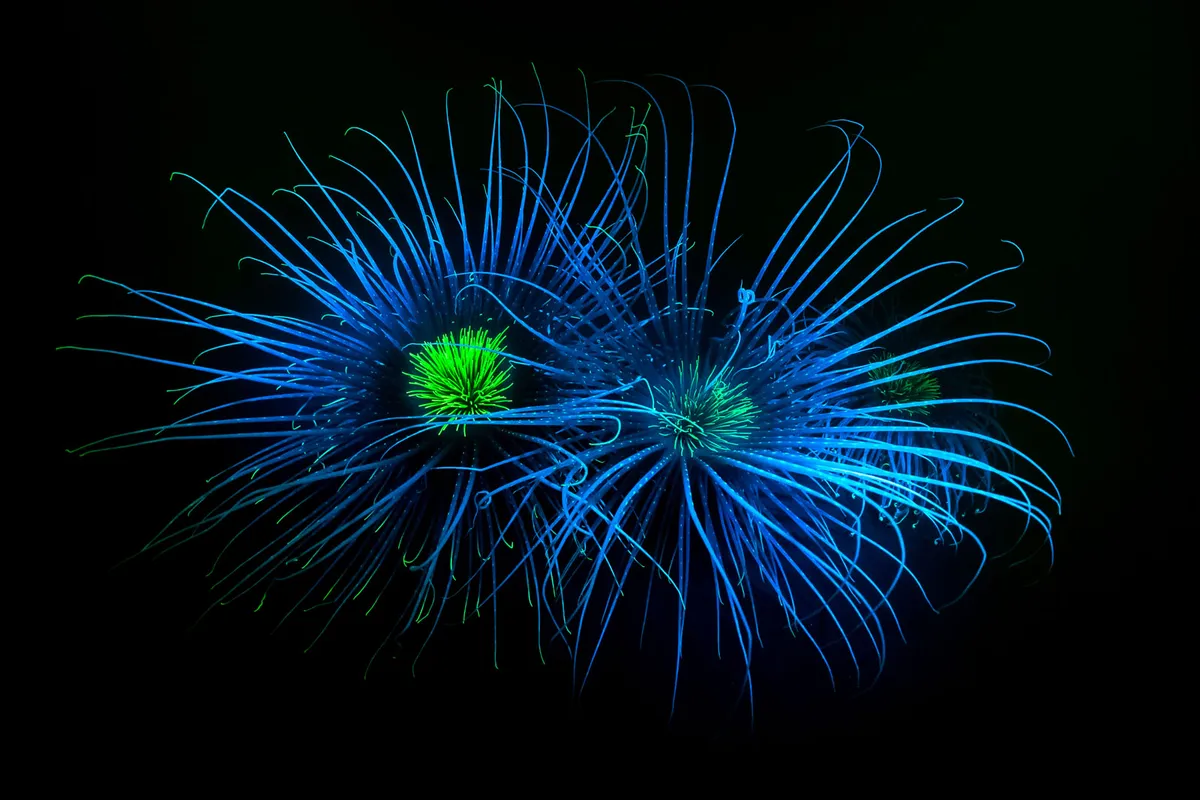
"Fluorescence photography requires specialist filters: one ‘exciter’ filter on your white-light source to create the blue light and another ‘barrier’ filter in front of your lens to reduce the ambient light reaching your sensor. These dual filters mean that high ISOs and open apertures are very much required in order to capture the excited, or fluoresced, light. The subject requires a careful approach too; these anemones live in very still water and are sensitive to the slightest movement. If disturbed, they will retract in mere seconds." Dan Bolt
What and where: Fireworks anemone (Pachycerianthus multiplicatus), taken at Loch Fyne, Scotland.
What’s All the Fuss About? by Will Palmer
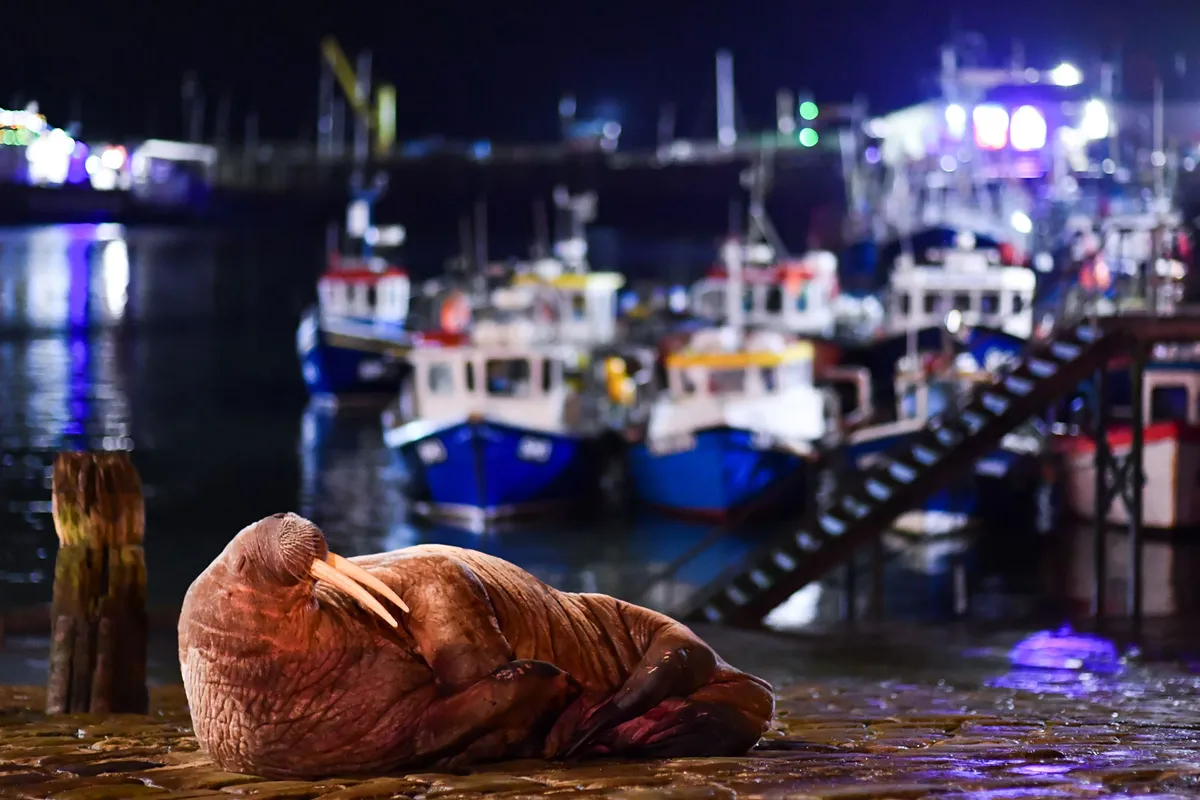
"In this photograph, the Arctic walrus who had come ashore to rest on the harbour slipway in Scarborough has lifted its head as a car passed on Foreshore Road. The image is lit by the streetlights to the left and features the town’s fishing boats in the background. Despite being taken handheld at 1/80th of a second at f/1.6, an ISO of 6400 was still needed to properly expose Thor and the slipway at 2:28am." Will Palmer
What and where: Walrus (Odobenus rosmarus), taken in Scarborough, North Yorkshire, England.
Squirrel Silhouette by Rosamund Macfarlane
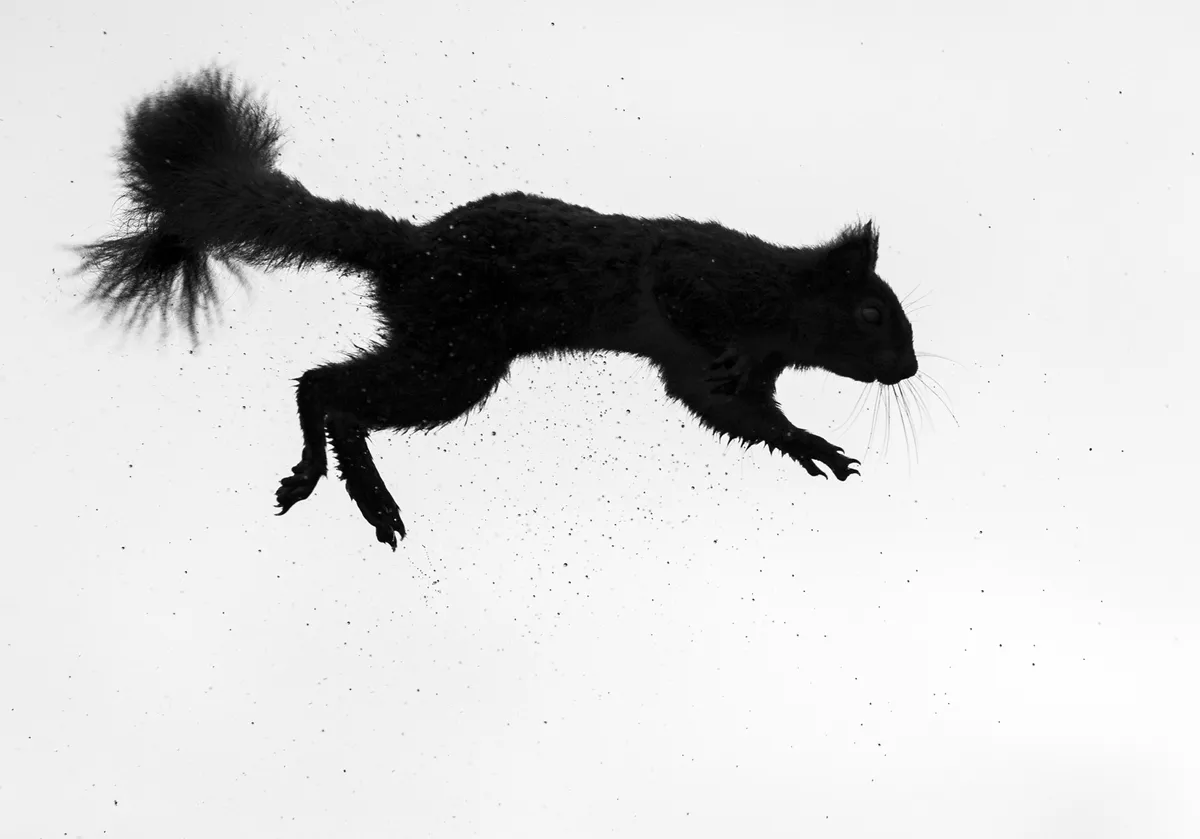
"Red squirrels are native and cherished in Cumbria, although they face competition and disease from grey squirrels. These charming creatures visit our garden daily for hazelnuts, and I can capture their antics without causing disturbance. During winter, when food is scarce, providing for them feels like helping our native population. This spring, young kits joined the adults for breakfast, and capturing their dynamic movements against the sky was a fascinating challenge." Rosamund Macfarlane
What and where: Red squirrel (Sciurus vulgaris), taken in Cumbria, England.
Tiny Forest Balloons by Jason McCombe
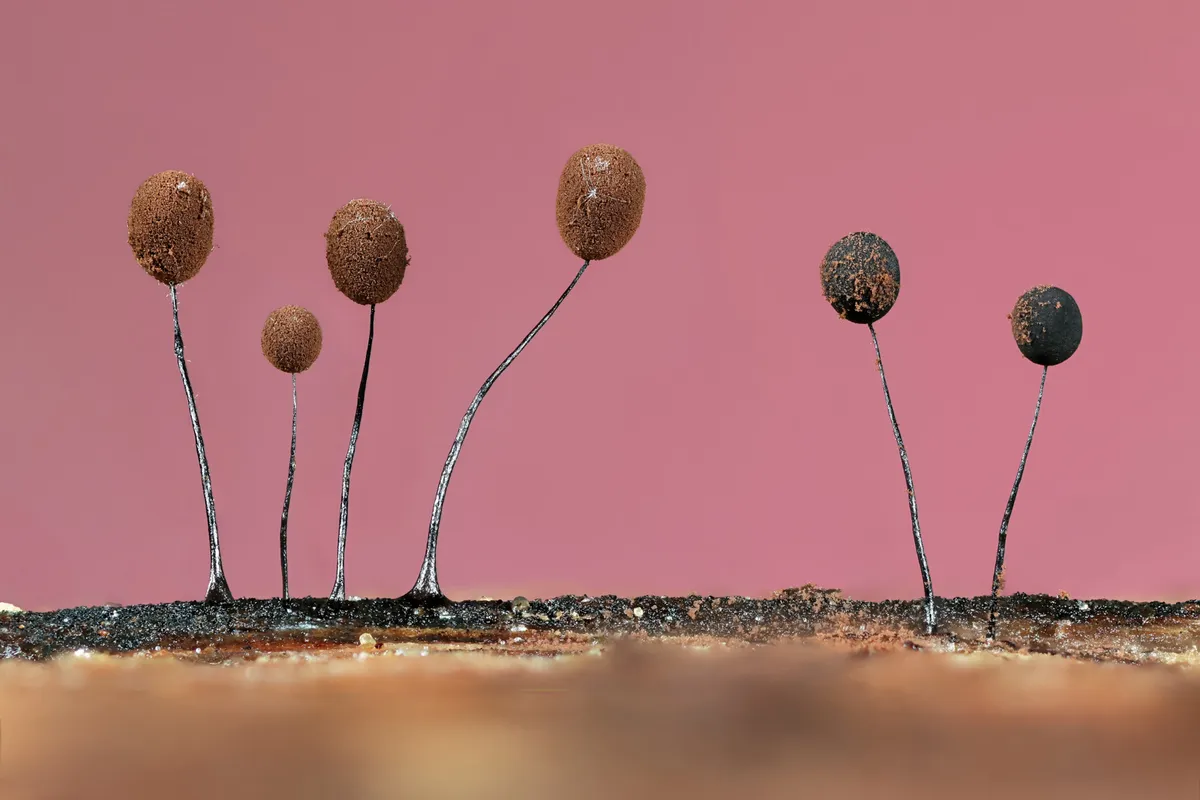
"The world of slime moulds is fascinating. They’re neither plants nor fungi. I had never noticed them before, but when I set out to find some to photograph, I discovered that, if conditions are right, they’re everywhere! They’re just so small that if you are not looking for them you will simply overlook them. Each head on these fruiting bodies is approximately 1mm wide, and the depth of field when shooting at such high magnification is so shallow that focus stacking is required. This image was made using 160 images, each focused on a different area of the scene, then stacked together to create one highly detailed image." Jason McCombe
What and where: Slime mould (Comatricha nigra), taken in Essex, England.
The 2025 competition is now open for entries at bwpawards.org, and invites photographers of all experience levels to submit their photos of Britain’s nature at its best.
Main image credit: Ryan Stalker, British Wildlife Photography Awards
Discover more incredible animals facts: